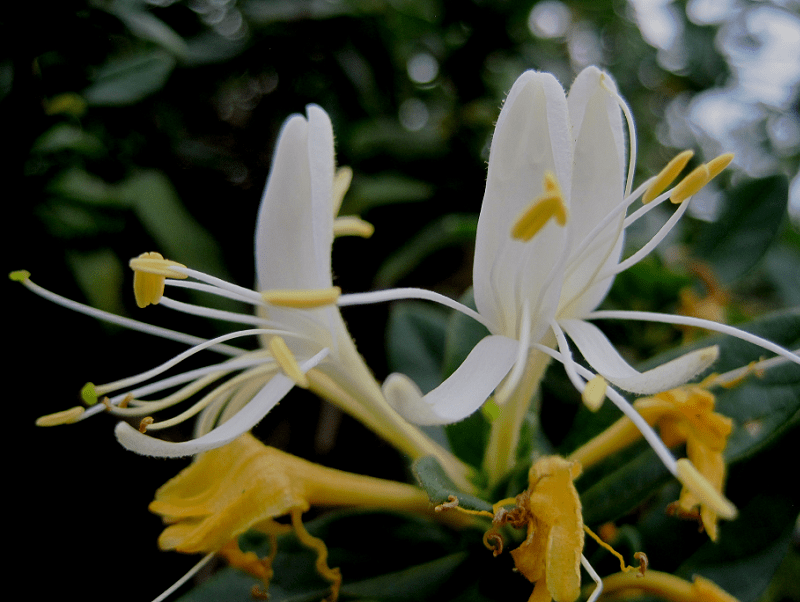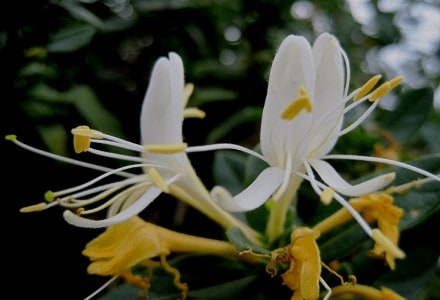
Honeysuckle Facts
- Perhaps surprisingly to some, the term Honeysuckle actually names an entire Family of stunningly beautiful plants placed in the Caprifoliaceae family. Due to this, each of these remarkable species develops as either arching shrubs or twining vines.
- A remarkable total of roughly 180 recognized species of the plant further exist at this time. Several other species, however, remain under consideration for inclusion in the group at this time. Consideration of that status remains ongoing by researchers.
- All of the acknowledged members of this truly impressive Family of plants additionally share yet another characteristic. This particular one, however, has nothing to do with biology. In this instance, though, it’s a matter of general geography.
- That’s because all known varieties of this sweet-smelling and brilliantly colored plant evolved as native to the Northern Hemisphere. This geographical restriction also applies to those species presently being considered for inclusion in group.
- As of now, roughly 100 of the recognized Honeysuckle forms remain endemic to the country of China, in Asia. The continents of Europe and North America, along with the country of India, each further serve as home to 20 of the member species.
- The remaining forms of this marvelous Family appear scattered throughout various locations in the continents of Australia and Africa. Members of its group therefore benefit from one of the widest ranges of distribution currently known to science.
Related Articles
Jade Vine Bleeding Heart Vine American Wisteria
Honeysuckle Physical Description
Impressively, the majority of the known types of Honeysuckle evolved as comparatively strong twining climbers. On all of these, the leaves grow opposite, and develop as simple ovals. This visually appealing foliage also averages about 4.5 in (10 cm) in length.
Although most evolved as deciduous, some develop as evergreens. Many of the individual species also produce strongly sweetly-scented flowers. These blooms also produce small quantities of sweet, edible nectar. Most of the flowers develop in clusters of two.
Both shrubby and vining sorts have strongly fibrous stems which are suitable for binding and textiles. Like many beautiful plants, however, Honeysuckle has a somewhat dark secret. That’s because the fruit of the Angiosperms possess low level of poisonous compounds.
In appearance, these fruits possess either a spherical or somewhat elongated shape. The most commonly seen colors of the fruit include red, blue, and black. Nonetheless, on rare occasions, specimens produce this aspect of the plant in a wide range of hues.
- Kingdom: Plantae
- Phylum: Angiosperms
- Class: Eudicots
- Order: Dipsacales
- Family: Caprifoliaceae
- Genus: Lonicera
Honeysuckle Invasiveness
Amazingly, while the fruit of many varieties of Honeysuckle evolved to be toxic, this does have some uses. That holds true due to the fact that, in a few cases, the fruit of the Angiosperm, while quite tiny, can be consumed and even used for types of commerce.
This part of the stunning plants also has other natural uses, though. This remains true because the berries of most forms also remain attractive to numerous forms of local wildlife. For example, a wide variety of butterflies and hummingbirds love them.
Quite unfortunately, however, several species within this remarkable Family have now become invasive. This occurred when they were introduced outside their native range. This remains particularly true in both New Zealand and the United States.
Honeysuckle Popularity
Due to its many qualities, the Honeysuckle has now become popular in many regions of the world. This most commonly manifests itself in using it as a garden decoration. Many people use it both because it smells beautiful, and covers unsightly walls and outbuildings.
This gorgeous and colorful plant has also become quite popular for its sheer pleasure to the different senses. In fact, a great number of people find it pleasant to use for the numerous blooms it produces in the summer. These form as quite beautiful and highly aromatic.
The hardy climbing types of Honeysuckle do have certain specific needs. That’s because most forms need the roots in shade, but the tops prefer sunlight or very light shade. Finally, the varieties one uses also need to be chosen with care because most grow prolifically.
Species Sharing Its Range
Indian Bullfrog Black Widow Florida Panther
Check out our other articles on 5 Rare Mind-Blowing Cloud Types, Great White Shark, Rosy Maple Moth, Pearl Shoal Waterfall, Silvery Lutung, Indian Giant Squirrel

